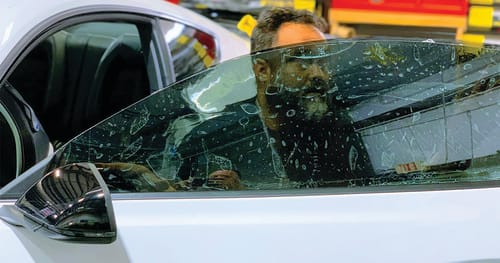
Is your car just too hot in the summertime? Or are you concerned about the harm UV rays can cause to your skin? Or maybe you just want your car to have a sleek look? If so, you’re probably considering upgrading your ride with window tint. This upgrade is an amazing addition that checks so many boxes, including comfort, health and aesthetics. However, since window tint has the potential to block law enforcement’s view into your vehicle, many states have laws outlining what percentage or shade of tint you can apply to your car’s glass. Here’s a quick guide from the window tint experts at Tint World®.
What is VLT?
When it comes to window tint, the basic standard of measure is VLT, which stands for visible light transmission. This is usually expressed in percentages. A shade of window tint’s VLT percentage is the amount of visual light the tint allows to pass through to the inside of the vehicle. The lower the percentage, the darker the tint. The darkest tint available, limo tint, has a 5% VLT. Before adding this level of tint to your vehicle, make sure you are abiding by state laws. When a vehicle has tint applied at the time the vehicle is manufactured, it is typically in a shade called factory tint. This tint has a 15-25% VLT.
Lighter Shades of Tint
Many states have laws that keep legal tint shades to 35% or lighter. In fact, 50% VLT tint is the average tint allowed by law in the United States. But even these lighter shades of tint have significant benefits when it comes to comfort and health. In fact, some practically clear tints block UV rays specifically, lowering the chances of skin damage or even cancer. If you are wondering what shade of window tint is right for you, or simply what’s legal in your area, Tint World® can help. Our experts can help you make the best tint decisions, and our professional installation will give you a perfect job every time. For more information, just contact your local Tint World® today!








